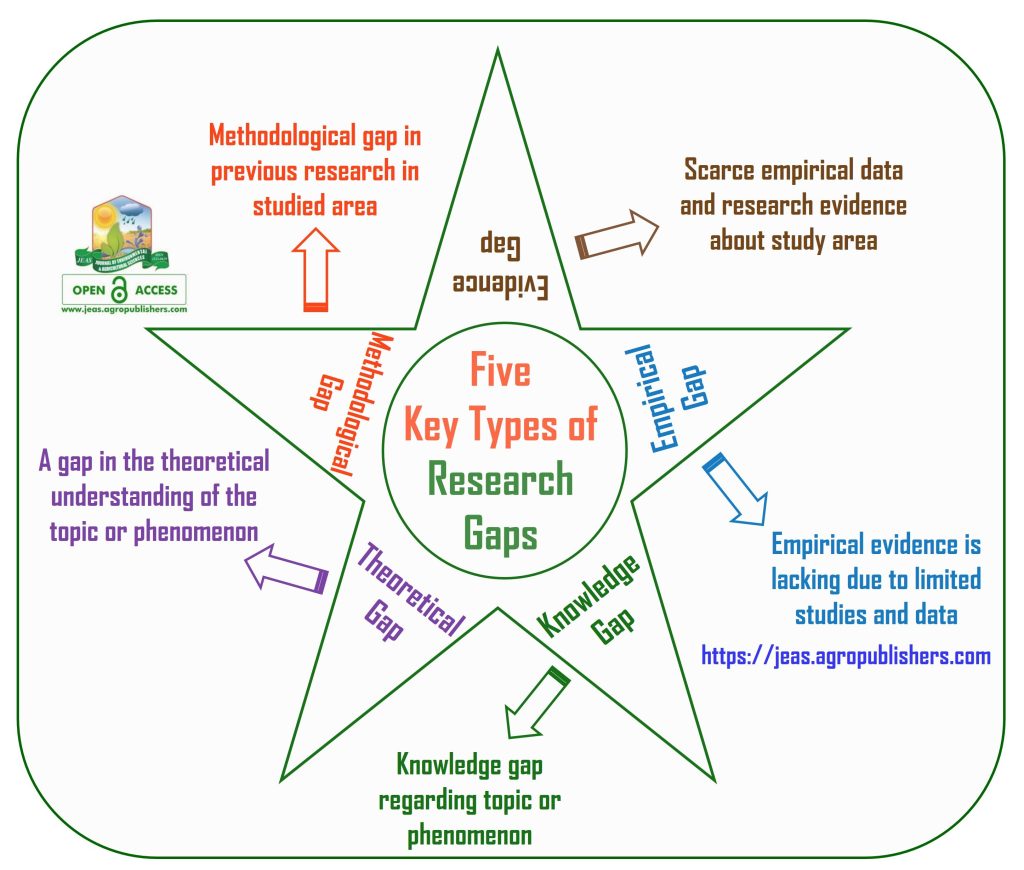JEAS-Blog (2025.9.9)
Research Gaps and Their 5 Key Types
Research gaps represent areas where existing knowledge is lacking, insufficient, or inconclusive, presenting valuable opportunities for new studies to make meaningful contributions. Identifying these gaps is crucial as it shapes research focus, informs study design, and propels advancements in a field, ultimately addressing significant issues and enhancing comprehension.
Five Key Types of Research Gaps
Knowing the type of gap in existing literature helps you define your research purpose clearly. There are five key types of Research Gaps
- Evidence Gap
Characterized by insufficient or conflicting evidence that hinders drawing firm conclusions. This occurs when research findings are inconsistent, sparse, or unreliable, making it challenging to support or refute claims about a topic. - Methodological Gap
It arises from limitations in research approaches or techniques. This gap suggests the need for improved, alternative, or innovative methodologies to overcome shortcomings in previous studies’ design, methods, or analytical techniques. - Theoretical Gap
Involves underdeveloped or inadequate conceptual frameworks or theories. Addressing this gap may require developing new theoretical perspectives or extending existing ones to explain phenomena or topics better. - Empirical Gap
It is marked by a scarcity of empirical data or observational findings. This gap results from insufficient empirical evidence, often leaving questions unanswered about specific contexts, populations, or conditions. - Knowledge Gap
It reflects a lack of understanding or information about a topic or phenomenon. Filling this gap involves researching to enhance awareness and comprehension of underexplored or overlooked areas.
Key Approaches for Identifying Research Gaps
Recognizing and addressing research gaps is crucial for advancing scholarship, informing future studies, and ensuring the relevance and impact of research across various fields. Several approaches help identify where evidence is lacking and guide future research priorities.
- Systematic Review: Rigorous review of existing evidence to highlight gaps.
- Scoping Reviews: Broad mapping of literature to identify knowledge gaps.
- Evidence and Gap Maps: Visual tools showcasing areas with lacking evidence.
- Bibliometric Analysis: Quantitative analysis of publication patterns revealing research trends and gaps.
- Stakeholder Surveys: Engaging with stakeholders to pinpoint perceived gaps and priorities.
Reference
Robinson KA, Saldanha IJ, Mckoy NA. 2011. Development of a framework to identify research gaps from systematic reviews. J. Clin. Epidemiol. 64(12):1325-30.


